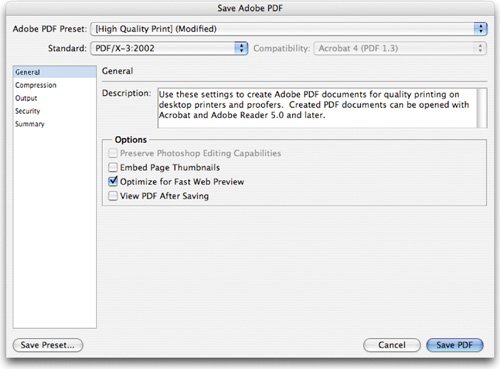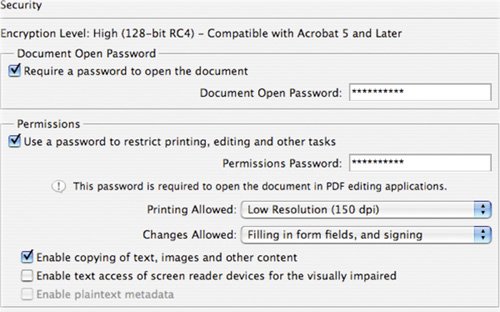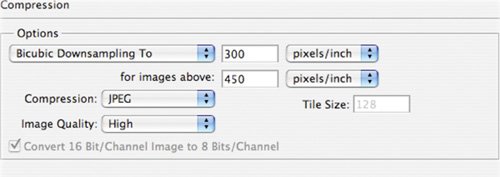PDF Essentials
The Portable Document Format (PDF) is a file format that Adobe invented. PDF was unveiled in 1992 and was intended to be an extension of PostScript. A PDF can describe any combination of text, images, multimedia, and layout. It is independent of the device it was created on, and can be viewed on virtually every operating system. The PDF is an open-standard, which means that the computer industry is able to create applications that can read or write PDFs without paying Adobe additional fees. This openness led to the quick adoption of PDF, and it is utilized online extensively. The most powerful PDF authoring tool is Acrobat from Adobe. This software is bundled with Photoshop in the Adobe Creative Suite Premium package. However, Photoshop (and most Adobe programs) have the ability to create PDFs. The PDF file format is an excellent way to send files to a service bureau or print shop as the file can be stored at print resolution with embedded vector files and high-quality output options. Compression Options for Adobe PDFWhen you choose to save artwork as a Photoshop PDF, you are presented with the Save Adobe PDF dialog box. You can choose to compress text and line art as well as downsample bitmap images. Depending on the chosen settings, you can significantly reduce the size of a PDF file with little or no loss of detail.  In the Save Adobe PDF dialog box, you can choose an Adobe PDF preset. This is a fast way to specify what is meant for commercial printing, distributed via email, and so on. You can click Save PDF to generate the file right away, or keep modifying the settings for special purposes.
CompressionThe Compression area of the Save Adobe PDF dialog box offers several options for reducing file size. You do not need to downsample, but you might want to if you want to better match the output resolution of a particular printer or to reduce file transfer times. The chosen interpolation method determines how pixels are deleted:
OutputThe most common way to create accurate color when creating a PDF is to stick with the PDF/X standard. However, you can choose to modify settings in this area and embed color profiles. Be sure to check with your printer or service bureau regarding color profile settings. SecurityThe PDF format supports several different security options. This can be useful to protect the document from unauthorized viewers or to preserve copyright by blocking copying or printing functions. Here are some of the most important security options: 
SummaryThe Summary area provides a single pane view of all of the settings you have used. This is a quick way to check the options you've enabled. When you're finished, you can click Save PDF to create the PDF file. You can also click Save Preset if you want to save the settings you've modified for future PDF creation. |
EAN: 2147483647
Pages: 129
- Chapter I e-Search: A Conceptual Framework of Online Consumer Behavior
- Chapter VII Objective and Perceived Complexity and Their Impacts on Internet Communication
- Chapter VIII Personalization Systems and Their Deployment as Web Site Interface Design Decisions
- Chapter IX Extrinsic Plus Intrinsic Human Factors Influencing the Web Usage
- Chapter XI User Satisfaction with Web Portals: An Empirical Study

